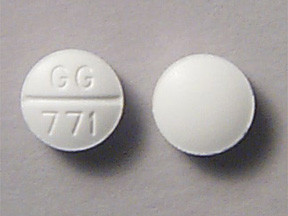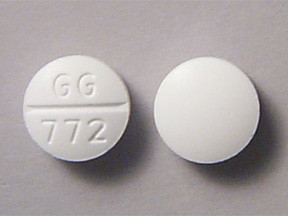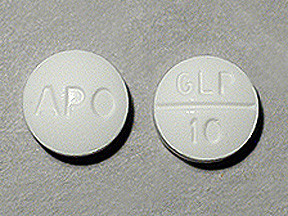GLIPIZIDE TABLET - ORAL
PHONETIC PRONUNCIATION: (GLIP-i-zide)
COMMON BRAND NAME(S): Glucotrol
GENERIC NAME(S): glipizide
Uses
USES: Glipizide is used with a proper diet and exercise program to control high blood sugar in people with type 2 diabetes. It may also be used with other diabetes medications. Controlling high blood sugar helps prevent kidney damage, blindness, nerve problems, loss of limbs, and sexual function problems. Proper control of diabetes may also lessen your risk of a heart attack or stroke. Glipizide belongs to the class of drugs known as sulfonylureas. It lowers blood sugar by causing the release of your body's natural insulin.
How to use GLIPIZIDE TABLET - ORAL
HOW TO USE: Take this medication by mouth 30 minutes before breakfast or the first meal of the day as directed by your doctor, usually once daily. Some patients, especially those taking higher doses, may be directed to take this drug twice a day. The dosage is based on your medical condition and response to treatment. To reduce your risk of side effects, your doctor may direct you to start this medication at a low dose and gradually increase your dose. Follow your doctor's instructions carefully. If you are already taking another diabetes drug (such as chlorpropamide), follow your doctor's directions carefully for stopping the old drug and starting glipizide. Colesevelam can decrease the absorption of glipizide. If you are taking colesevelam, take glipizide at least 4 hours before taking colesevelam. Use this medication regularly to get the most benefit from it. To help you remember, take it at the same time(s) each day. Tell your doctor if your condition does not improve or if it worsens (your blood sugar is too high or too low).
Side Effects
Precautions
Interactions
Overdose
Images
Reviews
Faq for GLIPIZIDE TABLET - ORAL
- Glipizide is an oral medication that is used to control blood sugar levels in people with type 2 diabetes.
- Glipizide belongs to a class of drugs called sulfonylureas, which stimulate the release of insulin from the pancreas. This helps lower blood sugar levels.
- The recommended starting dose of Glipizide is usually 5 mg taken once daily with breakfast. The dosage may be adjusted by your doctor based on your blood sugar levels.
- Common side effects of Glipizide may include dizziness, headache, blurred vision, nausea, and stomach upset. Serious side effects are rare but may include low blood sugar (hypoglycemia) and allergic reactions.
- Yes, Glipizide can be used in combination with other diabetes medications, such as metformin or insulin. However, the dosage and combination of medications should be determined by your doctor.
- It is important to inform your doctor if you have any kidney or liver disease, as Glipizide may need to be adjusted. Additionally, alcohol consumption can increase the risk of low blood sugar, so it should be avoided or limited.
- Glipizide itself does not cause weight gain. However, it may lead to increased appetite, which can result in weight gain if dietary habits are not controlled.
- Glipizide typically starts working within 30 minutes to an hour after taking it. However, the full effects may take a few weeks to be seen as blood sugar levels stabilize.
- Glipizide is generally not recommended during pregnancy, as it may harm the unborn baby. It is important to discuss the potential risks and alternative treatment options with your doctor.
Disclaimer
IMPORTANT: HOW TO USE THIS INFORMATION: This is a summary and does NOT have all possible information about this product. This information does not assure that this product is safe, effective, or appropriate for you. This information is not individual medical advice and does not substitute for the advice of your health care professional. Always ask your health care professional for complete information about this product and your specific health needs.




No Reviews Yet